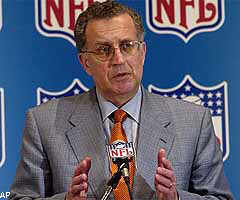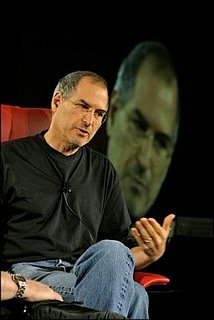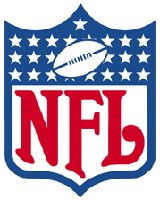 From NFL Media.com
From NFL Media.comCommissioner Tagliabue
Good afternoon. We've covered a lot of ground since I saw you on Monday. I think in a nutshell
we had a really good report from the Competition Committee. You've just heard about all of
that. Once again they've done a terrific job, and I think the membership recognized that with the
endorsement they had of most of their recommendations. Other than that, we had many reports
and a lot of discussion about short-term things -- 2006 season -- and some long-term things --
business in the United States -- and some discussions about where we are headed internationally
in Europe, Asia, and elsewhere.
I know that you have many different subjects on your minds, so I'll go ahead and take your
questions.
Q: Are you still confident that you can retire in July (with a successor in place)?
PT: Am I still confident I can be out of here by July? I think so. Yes. It doesn't really matter
whether it's the 28th of July or the 10th of August. The only reason we've talked about July is
because that's I discussed with Dan Rooney, and we estimated that this could take four months.
If it takes two and a half, fine. If it takes five and a half, that's fine, too.
The one thing that might be extended, just in terms of being practical, is that there's a dead
period in the league from June 15 to July 15 where not a lot happens on any front because most
clubs take vacations. I'll be taking some vacation then, too, which we did discuss with the
owners. The practicalities of the NFL calendar are that when minicamps end in mid-June, a lot of
teams go to part-time schedules. Coaches take vacations, players leave, front office staff leave,
and they don't resume until sometime after the Fourth of July. That's got to be factored into the
timeline.
Q: So you are confident you will not have to go through the next season as Commissioner?
PT: Yes. Other than as a fan.
Q: What are the odds that the NFL will play a game in China (in 2007)?
PT: I think they are increasing. We've had some discussions on that. Our own international
people have been to China a number of times. I was there last May and met with representatives
of the city of Beijing, their Olympic Committee and the Mayor of Beijing. We and NBC have
been having those discussions. I think there's an increasing prospect that we could have a game
there in August 2007, which would be the beginning of the one-year countdown to the following
year's Olympics, which will begin on 8/8/08.
Q: Can you comment on the size and makeup of the search committee for the next
commissioner?
PT: We've talked to the owners about a committee of no fewer than six and no more than eight,
but that's not cast in concrete.
Q: When will the committee be announced?
PT: Probably sometime next week.
Q: If you could reflect back on the Cleveland situation 10 years ago, how do you view that
problem as it arose and how it was resolved?
PT: I guess I view it today pretty much as I viewed it then. It was a very traumatic thing for the
Browns' fans, the franchise and the league. The traumatic aspects of it were compounded by the
fact that Baltimore had had a similar trauma in '84 -- losing its team. So we had two cities, two
states, and two groups of fans -- great fans for many, many decades -- to deal with. Great
traditions. Some of the greatest players ever in the league played with the Colts and the Browns.
So that was very traumatic. I think the solution that was reached involved some considerable
give on all sides. Mayor White was terrific. Al Lerner was terrific throughout. Hopefully the
solution that was reached, which was novel, was one for the long term.
One of the personal regrets is that Al's health caught up with him, and he couldn't be there to see
a Super Bowl. I know that is the team's goal, that's Randy's goal, but it would have been nice if
Al had been there to pursue it.
Q: Do you continue to keep playing regular season games overseas?
PT: I think that we had an excellent report by our new head of international -- Mark Waller. We
presented the idea that going forward after 20 years of preseason games in non-U.S. venues,
starting with the Cowboys and the Bears in '86 in Wembley Stadium up through Tokyo last
summer, that the priority now has to be to institutionalize arrangements to have live, regularseason
games plus other important NFL events such as the Pro Bowl, for example outside of the
U.S. because the fans now are interested and they want to be part of the regular season or want to
be part of other events like the Pro Bowl. So that's going to be our focus, and we started some
conversation yesterday with the owners about what kind of a structure, what kind of
commitments it would take from all the teams to institutionalize that so the obligation of playing
a game every now and then, a regular season game, outside of the United States would become a
part of the normal team participation in the National Football League.
Q: Do you view the Mexico City game last year as an experiment or a success?
PT: I think it was a resounding success. I think it was built upon the preseason games we had
down there. It built upon the fan interest that's there. It was a resounding success both in Mexico
and the United States, and the two teams (49ers and Cardinals) view it that way, as does the
whole league.
Q: Regarding Los Angeles, you already have a 32-team template that works perfectly. Does
that mean the league would have to move a team into Los Angeles once that situation is
settled out there?
PT: Not necessarily. We've operated with odd numbers of teams. We've operated with divisions
with different numbers of teams. We'll be looking at all kinds of alternatives. I think that the key
thing here at this meeting was that we had a positive reaction to the proposals that have been
developed by our staff with the Coliseum and Anaheim. I'm expanding our working group of
owners by adding six owners to the five we've had. We'll now have an 11-owner group and
we'll be expecting to have meetings either in April or early May with representatives of the
Coliseum and Anaheim to put this to hopefully some decision at our May meeting.
Q: Is the escalating cost of building stadiums a deterrent to this project or to expansion
because then you'd have a huge fee to build a stadium and then another huge fee to
purchase a franchise?
PT: Yes. I think the escalating cost of anything in life, the escalating cost of a pair of shoes are a
deterrent to having two or three pairs. It's sort of obvious. So yes, it's an issue.
I remember when I was a kid I had baseball spikes and I wanted to run track, and my father told
me to run the mile with baseball spikes, which was not good for your feet, because two sets of
spikes were unnecessary. They were expensive. So I've always had that philosophy. In fact, I
won the state high school high jump championship with baseball spikes.
Q: It must have been a weak field?
PT: It was a weak field. Very weak. That's a different issue. Costly shoes and a weak field -- you
can still succeed.
Q: Will the search committee hire the consulting firm or will you?
PT: It would be a decision the committee would make after we interview multiple firms.
Q: Are you concerned about the perception of officiating in the playoffs with so many fans
convinced that there were bad calls?
PT: No.
Q: Why didn't you fine Mike Holmgren for his comments?
PT: We discussed that with Mike this morning. He said earlier in the meeting that he wanted to
make it totally clear that the Steelers won the game fair and square and he emphasized that at
several different points during the meeting. Then I spoke with him this morning, and he spoke
with me. He said that he just wanted to express strong appreciation for the relationship we've
had and what he's learned from me. I felt the same way.
We talked about the fact that Mike Holmgren was one of the first coaches, if not the first, to
emphasize to me how important it was for me as the commissioner to make myself accessible to
the assistant coaches, to the coordinators. We talked about a meeting we had in Green Bay when
he was the head coach and I was visiting training camp and expected to spend most of my time
with the players, or with the head coach, or with the Packers executive committee. But Mike
urged me to have lunch with all the assistant coaches and coordinators. Then Fritz Shurmur
wrote me a note later saying he'd been in the league for 34 years and never had had a prior
conversation with a commissioner, but it was one of the most important things that ever
happened in Fritz Shurmur's life. From that point forward, whenever I went to training camps, I
would meet with assistant coaches and coordinators whenever I could.
We talked this morning about learning from each other, and then he said that he knows he
popped off a little bit about the officiating after the Super Bowl. I told him I had a letter on my
desk written by my staff to fine him, but that that particular letter falls under the category of
something I learned a long time ago -- the first draft of a letter is better put in the trash can than
sent to the addressee, which means you should think twice before you start firing letters off. I
think the issue is resolved.
Q: How important is it that this search committee be diverse economically and
geographically? Is that important?
PT: Yes. We had some discussions yesterday with the owners about whether the committee
should be one owner from each division or whether there was any one factor that should
determine how the committee would be composed. I expressed the view that there was no single
litmus test, that if you wanted to have a representative committee, you'd have to look at multiple
factors. That's the way we'll approach it.
Q: There's a lot of complaints from fans about too much drinking in the stands. What's
your stance on that?
PT: I think we've had fewer complaints on that than we've had on the doubleheader games
starting at 1:00 P.M. in Jacksonville.
Q: Who's complaining about that?
PT: I thought that's what you asked me the other day. Were we going to start that Dallas-
Jacksonville game at 1:00 P.M. or 4:00 P.M.?
Q: But seriously, don't you get complaints like that?
PT: I'm sure the teams do and sometimes they get to my attention. We've had programs over the
years with the teams run through the league about fan behavior, and the teams make it a big
priority including having their security people be very attentive, policies about when beer is
served, when beer is not served. We have technology in the stadiums, cameras and other
technology, to identify unruly fans and revoke their season tickets. So, yes, that's part of sports.
It's part of American life, I guess. That happens at the beach, too, not just at NFL stadiums.
Q: On the issue of minority hiring, there seems to be fewer minorities on the offensive side
of the ball in coordinator positions. Have you looked at that at all?
PT: We have looked at that. I think over the years the numbers have kind of flipped back and
forth. At particular points in time it seems like there would be more on the defensive side, other
points of time, more on the offensive side. Why that is, no one seems to know.
We've tried to encourage the teams, if it's an issue of responsibility, to broaden responsibility. If
it's an issue of participation by position coaches in meetings with the coordinators and head
coaches to try to address it. It's something that's been discussed, and we try to address it
internally with our diversity committee and with some of the ways that we structure programs at
the coaching seminars that we run in May. The answer is yes.
Q: With the NFL Network preparing to broadcast its first regular-season game this
Thanksgiving, considering the billions of dollars that are involved with other networks,
what do you see as the potential for the Network to broadcast more games in the future?
Has the idea of pay-per-view ever been entertained?
PT: No. Our focus for the next six years is the eight games. We're going to be very careful to
make those incremental in terms of when they are played. When you boil it all down, it's about
three or four incremental national games. We had some Saturday games on CBS and FOX which
are now kind of folded into primetime and will be run on the NFL Network. I think we've gone
from 92 national games to 96 or something like that. It's a very small increment. There's been no
discussion of pay-per-view. It really is an effort to get games that otherwise might be regional
telecasts or national games on other networks in a couple of instances onto a nationally distributed network.
Q: If the Kansas City proposal were ever to get approved, would putting those extra games
on the NFL Network be a consideration?
PT: It's not something we've ever discussed, because I have never thought the idea of expanding
the playoffs was compelling. It's not anything we've ever discussed and I wouldn't anticipate
that. I think the playoff games will remain on our outside networks, if we ever have any more
games. Like I said, I don't think it's a good idea. We're going to discuss it at the May meeting, in
terms of expanding the playoffs.
Q: Why do you like the current format as is?
PT: Because it works. I think that when you go beyond that, you get into dilution and other
issues you shouldn't be getting into.
Thank you very much.
###






